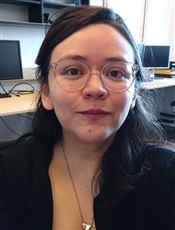
|
Monica Garcia Gomez |
| Home | Team | Publications | CV | Opportunities |
Research
My research is part of CROP-XR, a Dutch initiative that aims to bring together experts in plant biology, bioinformatics, artificial intelligence, mechanistic modeling and control theory in order to develop smart-breeding of extra-resilient crops. We are developing mechanistic models of plant responses to simultaneous and prolonged high ‘ambient’ temperature (T) and water-deficit (D) conditions to identify the interplay between T and D and pinpoint the molecular hubs at which trade-offs and synergies arise. Specifically, we are studying the genetic-hormonal regulatory networks that allow plants to sense, respond and withstand to suboptimal T and D conditions, and ultimately leading to physiological adaptations, growth and developmental responses that we study with functional-structural plant models. The outcome of our research will direct efforts for the development of improved crop varieties that will perform better under more challenging conditions, key to face the upcoming climate conditions and limitations in the use of fertilizers and chemical pesticides.
Multiscale models of root stem cell niche regeneration
In my group we use multiscale models to study the mechanisms regulating the pool of stem cells in the root apex, with the aim of understanding how the size, patterning and regenerative capabilities of the quiescent center (QC) is regulated in different species. Towards this goal, ongoing projects in the lab are:
- Uncovering the self-organizing mechanisms underlying root tip regeneration with a multi-scale model: we use mathematical models to study the coordinated action of different pieces of the regeneration puzzle and understand how the spatio-temporal changes in cell fate and repatterning of the tissue arise through the interplay of information remaining in the stump, wound signaling, changes in hormone distribution and in the expression of root patterning regulators, all of this while the cells keep on growing and dividing.
- Agent-based models of the intracellular transport of key patterning regulators: in this model we are integrating experimental details of the proteins that enable the optimal transport of key mobile regulators towards the plasmodesmata, and assess the impact on the patterning of the stem cell niche.
For opportunities to join the group and potential collaborations click here, or send an email to: m.l.garciagomez@uu.nl.


